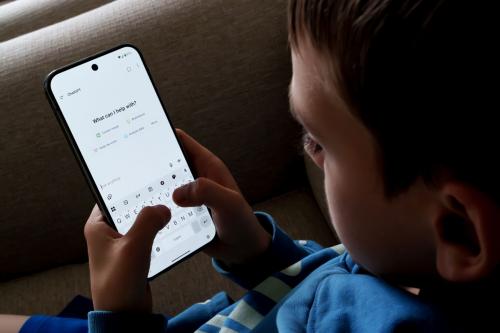New TechTank Blog Posts Are Available Here
New technologies can have revolutionary impacts with widespread and unexpected benefits. Technology can also serve as a tool to enable governments to better serve their citizens. The public sector can also develop policies that utilize technologies to empower innovators. These are the 10 technologies from 2014 that innovators and governments are using to make the world a better place.
1. Open Health Data
Under the Obama administration’s leadership, the Centers for Medicare and Medicaid have released previously obscured health data. Data transparency has the potential to improve many aspects of the health care sector and potentially help to slow rising costs. Consumers also have greater control over their own health records. This makes it easier to share the data with medical professional or to take advantage of health analytics apps.
2. 3D Printing
3D printers are a flexible platform that will disrupt the manufacturing sector. The technology uses metal and plastic “inks” to build an object with thousands of extremely thin layers. The flexibility of the technology enables regional factories to tailor products to local markets. This can bring manufacturing jobs home and unleash a new generation of American innovators.
3. Finding Criminals on the Deep Web
The “deep web” is the part of the Internet that is not indexed by commonly used search engines. Criminals use websites on the dark web to facilitate illegal activities including drug and human trafficking. Law enforcement officials are now using Big Data analytics to sort through the trove of websites and identify lawbreakers.
4. Financial Inclusion
Mobile technology has connected previously unserved populations to financial systems. Mobile allows millions of people access to credit and provide a simple and flexible platform for commerce. Though regulatory challenges still exist, governments around the world are developing novel approaches to connect all people to financial institutions. This has numerous benefits for the economy overall but can also provide lines of credit to millions of people who do not have access to banks.
5. Ubiquitous Internet with Mobile
Wireline Internet has facilitated the modern information revolution. But people who live in rural areas or can’t afford expensive Internet connections are not able to take advantage of this revolution. Mobile Internet is helping to overcome this gap. Many are developing new methods of Internet delivery including Super Wi-Fi and balloons. These new platforms will easily interface with mobile devices bringing the Internet to every corner of the globe.
6. Public Health Combating Disease
Mobile phone metadata is potentially useful in guiding the response of public health officials after the outbreak of an infectious disease like Ebola. During these emergencies it’s critical that health workers identify potential patients and big data analytics can help to predict who may have an elevated risk of infection. There are many thorny privacy issues that policymakers must work out before such systems are widely deployed. Beyond big data analysis, mobile phones already make it easier for leaders to disseminate information about public health events to people all over the world.
7. Virtual Schools
Virtual schools offer online supplementary courses to students free of charge. This approach allows self-motivated students an opportunity to take classes that are not offered in their brick-and-mortar school, including Advanced Placement and specialized STEM courses. Recent evaluation efforts indicate that students in these classes do no worse than students enrolled in a traditional class on average. In addition the classes generally cost governments less to provide and are free for eligible students.
8. Do Not Pay Portal
The Do Not Pay Portal is an effort by the Treasury Department to combat fraud and abuse. The database contains the names and contact information for those people who are ineligible for federal benefits. Sharing this information across agencies is key to help prevent people from illegally collecting tax refunds or entitlement benefits.
9. Mesh Networks
Mesh networks are ad hoc webs of device-to-device connections that take advantage of the Bluetooth and Wi-Fi antennas in smart phones. This creates in essence a pop-up network that has numerous benefits. Recently, protestors in Hong Kong used mesh networks to communicate with each other and avoid government censorship. Mesh networked applications do not access the Internet, which makes them especially useful for rapid mobilization efforts in relatively small geographic areas.
10. Democratic Participation
Apps can help promote democratic engagement. Election information about candidates, voting places, and new policies are spread out on numerous websites. But a new generation of apps has brought together these data sources and equipped voters with vital information.
New TechTank Blog Posts Are Available Here
The Brookings Institution is committed to quality, independence, and impact.
We are supported by a diverse array of funders. In line with our values and policies, each Brookings publication represents the sole views of its author(s).



Commentary
TechTank’s Top 10 Tech Innovations That Will Transform Society and Governance
December 22, 2014